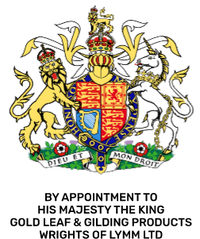Edible Gold Leaf Across the World - South Africa
- by sam@wrightsoflymm.co.uk User
Introduction to Edible Gold Leaf
Gold has fascinated humanity for centuries, not just as a symbol of wealth and power but also as a decorative element in food and drink. Today, edible gold leaf is experiencing renewed popularity across South Africa, appearing in fine dining, luxury beverages, and even skincare products. Whether in the form of 24 carat goldleaf sheets, 23 carat edible gold flakes, or delicate gold dust, this shimmering ingredient is captivating chefs, mixologists, and event planners. Alongside gold, silver leaf, silver flakes, and silver dust are also being embraced for their elegance and unique visual appeal.
The Ancient Origins of Gold Leaf
The use of edible gold leaf can be traced back to ancient civilizations. The Egyptians used gold in rituals, believing it had divine and healing properties. During the Renaissance in Europe, goldleaf was often applied to desserts and liquors to signify opulence and status. In Japan and India, edible gold flakes and silver leaf have long been used in ceremonial sweets and traditional celebrations.
South Africa, with its deep history in gold mining, has its own connection to this tradition. As one of the world’s richest gold-producing regions, it’s no surprise that edible gold products have found a unique place in South African culture, blending global luxury traditions with local heritage.
Goldleaf in South African Fine Dining
South Africa’s culinary scene is increasingly experimenting with edible goldleaf. Upscale restaurants in Cape Town, Johannesburg, and Durban are using 24 carat gold leaf and 23 carat gold flakes to elevate dishes and desserts. From gold-dusted chocolates to steaks topped with shimmering leaf, the inclusion of gold creates a sense of exclusivity.
Some popular uses include:
-
Desserts: Cakes, macarons, and pastries layered with gold dust or silver dust.
-
Chocolate: Luxury chocolate brands use gold flakes to make their products stand out.
-
Meat & Seafood: Wagyu beef, oysters, and sushi are sometimes adorned with goldleaf for dramatic presentation.
Goldleaf in Luxury Drinks and Mixology
In South Africa’s vibrant nightlife and bar culture, edible goldleaf has become a sought-after addition. Mixologists are adding gold flakes and gold dust to cocktails, champagne, and sparkling wines to create an unforgettable drinking experience.
Luxury brands also use 23 carat gold leaf and silver flakes in spirits and liqueurs, giving beverages a visual sparkle. Popular examples include:
-
Cocktails: Golden martinis rimmed with gold dust.
-
Wines and Bubbles: Sparkling wines infused with gold flakes.
-
Special Events: Custom champagne bottles decorated with goldleaf for weddings and celebrations.
Cultural Significance in South Africa
Edible goldleaf has become a symbol of modern luxury in South Africa. It is frequently used at weddings, milestone birthdays, and high-end corporate events. The use of 24 carat gold leaf is especially popular for cake decorating, while silver leaf is often chosen for a more subtle, refined shimmer.
Because of South Africa’s mining legacy, gold carries a sense of national pride. Using edible goldleaf in celebrations is seen as both a nod to heritage and an embrace of international luxury trends.
Health and Safety of Edible Gold
One of the most common questions is whether edible goldleaf is safe to consume. Authentic edible gold is 23 carat or 24 carat, meaning it is pure and free of impurities. This makes it biologically inert—it passes through the body without being absorbed, making it safe for consumption. The same applies to silver leaf when it is produced for culinary purposes.
It’s important to note that only certified edible gold and silver should be used. Decorative craft-grade goldleaf is not safe for ingestion.
The Future of Edible Goldleaf in South Africa
With the rise of luxury dining and event culture, edible goldleaf, gold flakes, gold dust, and silver leaf will likely continue to grow in popularity across South Africa. Restaurants and event planners are constantly innovating, and edible metals are becoming a defining element of indulgence and sophistication.
We can expect to see more:
-
Gourmet food hampers featuring gold flakes.
-
High-profile events showcasing goldleaf-decorated dishes and beverages.
Conclusion
From ancient rituals to modern gastronomy, edible gold leaf has always been a symbol of luxury and prestige. In South Africa, its use connects the nation’s rich gold mining history with contemporary culinary artistry. Whether in the form of 24 carat goldleaf, 23 carat flakes, or shimmering silver dust, edible metals are transforming the way South Africans celebrate life’s most memorable occasions.
If you’re looking to add an unforgettable touch of elegance to your dining or event experience, edible goldleaf and silver leaf might just be the perfect choice.






